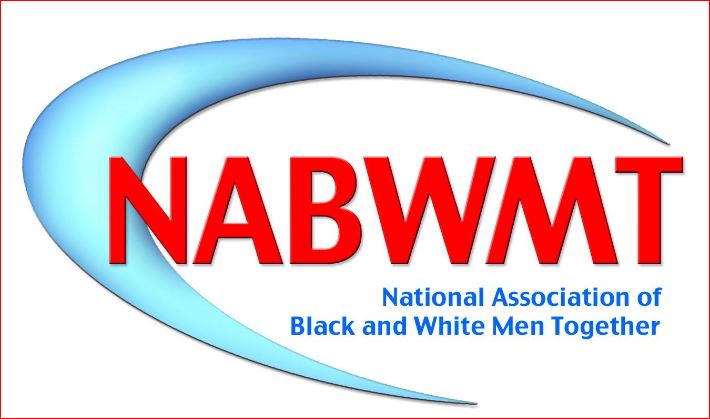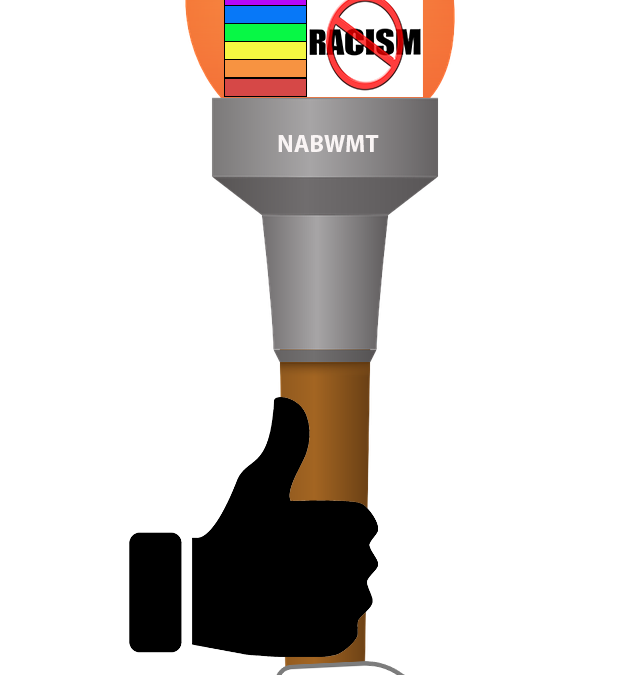

The National Association of Black and White Men Together for over 40 years has brought the news of the suffering of Black Men and the lives of gay men who have to hide their sexual identity. We have catered together two stories in these areas of recent events.
On Racism
Vandals tore down a Black Lives Matter banner and sign from two historic Black churches in downtown Washington and set the banner ablaze as nighttime clashes Saturday between pro-Donald Trump supporters and counter-demonstrators erupted into violence and arrests.
Police on Sunday said they were investigating the incidents at the Asbury United Methodist Church and Metropolitan A.M.E. Church as potential hate crimes, which one religious leader likened to a cross burning.
A video posted on Twitter showed a group of men appearing to take down a BLM sign at the Metropolitan A.M.E. Church as others in the crowd shout, “Whose streets? Our streets.”
This is reminiscent of cross burnings. The evil that has reared its ugly head.”
Leaders of the Black Lives Matter organization decried the attacks on the churches, partly faulting police for allowing white supremacists to “run rampant.”
The incidents came following weekend rallies in support of Trump’s baseless claims that he won a second term, which led to dozens of arrests, several stabbings and injuries to police officers.
Police in the District of Columbia said they arrested nearly 30 people for a variety of offenses, from assault to weapons possession and resisting arrests and rioting. The violence broke out after sundown Saturday.
Four men were stabbed around 10 p.m. after a fight downtown, police said. At least one suspect, 29 year-old Phillip Johnson of Washington, was arrested on a charge of assault with a dangerous weapon. A police report obtained by The Associated Press said at least one of the victims identified Johnson as the person who stabbed him.
Trump loyalists gatherings were intended as a show of force just two days before the Electoral College met to formally elect Democrat Joe Biden as the 46th president. Trump, whose term will end Jan. 20, refuses to concede, while clinging to unfounded claims of fraud that have been rejected by state and federal courts, and Friday by the Supreme Court.
A pro-Trump demonstration last month, which drew 10,000 to 15,000 people to the capital, also ended late on a Saturday evening with scattered clashes between Trump’s allies and local activists near Black Lives Matter Plaza near the White House.
But while Saturday’s rallies, including one on Freedom Plaza downtown, were smaller than on Nov. 14, they drew a larger contingent of the Proud Boys, a neo-fascist group known to incite street violence. Some wore bulletproof vests as they marched through town.
On Homosexuality
On the topic of gay careers there is a new book by John Birdsall, about James Beard the famous American Food critic and Gay man. This gives a lens to Beard’s life, braiding the strands of privilege and pain, performance and anxiety, into an entirely new story. He had a huge impact on American cultural life, yet lived with such fear of being exposed.”
The food of the United States wasn’t then considered a true cuisine, like that of France, China, Japan or Italy, where culinary traditions were built over centuries. But the American melting pot had been combining ingredients through generations of immigration. And in the counterculture of the 1970s, the idea of the global palate was filtering into the mainstream, sweeping Chinese cooking classes, Indian spice blends, Japanese pottery into U.S. kitchens.
But most chefs, and others who have known Beard through his countless books, columns and television appearances (which began in 1946), have had no idea of Beard’s “messy” parts of his story.
In his childhood Beard suffered because of his size, the expulsion from college because of a single sex act, the anxiety he lived with as a gay celebrity when coming out was unthinkable.
And there are troubling parts: plagiarizing and taking credit for other people’s recipes, accepting paid endorsements for products that he did not always believe in, and exposing himself to and fondling young men who hoped for his professional support.
Born in 1903, Beard was an only child raised mostly by his mother, Elizabeth Beard, who was famous for her cooking at the elegant boardinghouse she ran, the Gladstone, in the days of oyster patties, roast pheasant and charlotte russe. The person who did most of the actual kitchen work was Jue Let, a masterly cook from Guangdong who worked at the Gladstone and then in the Beard family home for more than a decade.
In Beard’s memory, his mother made all the rules: only certain strains of fruit, like Marshall strawberries, were “allowed into the house”; she “would not dream” of using canned vegetables; venison “wasn’t worth the trouble,” and so on. The willingness to be opinionated that he learned from her helped him become one of the great food voices of his century.
In most of Beard’s writing, he was pushing the story of grand, happy boyhood holidays,” Mr. Birdsall said. But at the glorious duck dinners and mince pie feasts that Beard describes, he was usually the sole child present; his father, who avoided his mother’s racy friends, was often absent, and Beard learned to perform for the crowd, as he felt compelled to for the rest of his life. “I soon became as precocious and nasty a child as ever inhabited Portland,” he wrote in his memoir.
There seems to have never been a time when Beard was comfortable in his own skin. He knew he was gay from a very young age. The first public airing of his gay identity was traumatic: In his freshman year at Reed College, he was caught by his roommates in a sexual encounter with a professor, and summarily expelled — a double humiliation that he never entirely recovered from.
Being expelled from Reed meant effectively being banished from home — albeit with a wide socio-economic safety net. He sailed for Europe, discovered the gay underground in London and Paris, moved to New York and began his food career in the 1930s, catering parties thrown by Manhattan’s gay and art-world elites.
Even as he became confident and successful, Beard always carried shame about his size; 6 feet 3 inches tall, he often weighed more than 350 pounds in adulthood. For the last 30 years of his life, his legs had to be kept tightly wrapped in bandages and compression stockings because of chronic edema and varicose veins. And, according to Mr. Birdsall’s research, Beard had a lifelong condition called phimosis — a too-tight foreskin that makes erections extremely painful — that made Beard’s feelings about sex and his body even more complicated.
And so, though he had many friends in the food world (and enemies, especially those whose recipes he lifted), Beard had just a few intimate partners over the course of his life. It wasn’t until the 1970s, when he settled into fame and some wealth, that he achieved the stability that allowed him to buy a townhouse in Greenwich Village with his partner, Gino Cofacci, and come into his own as a host.
_____________________
Source: Associated Press
and “The Man Who Ate Too Much,” by John Birdsall, published in October by W.W. Norton.

